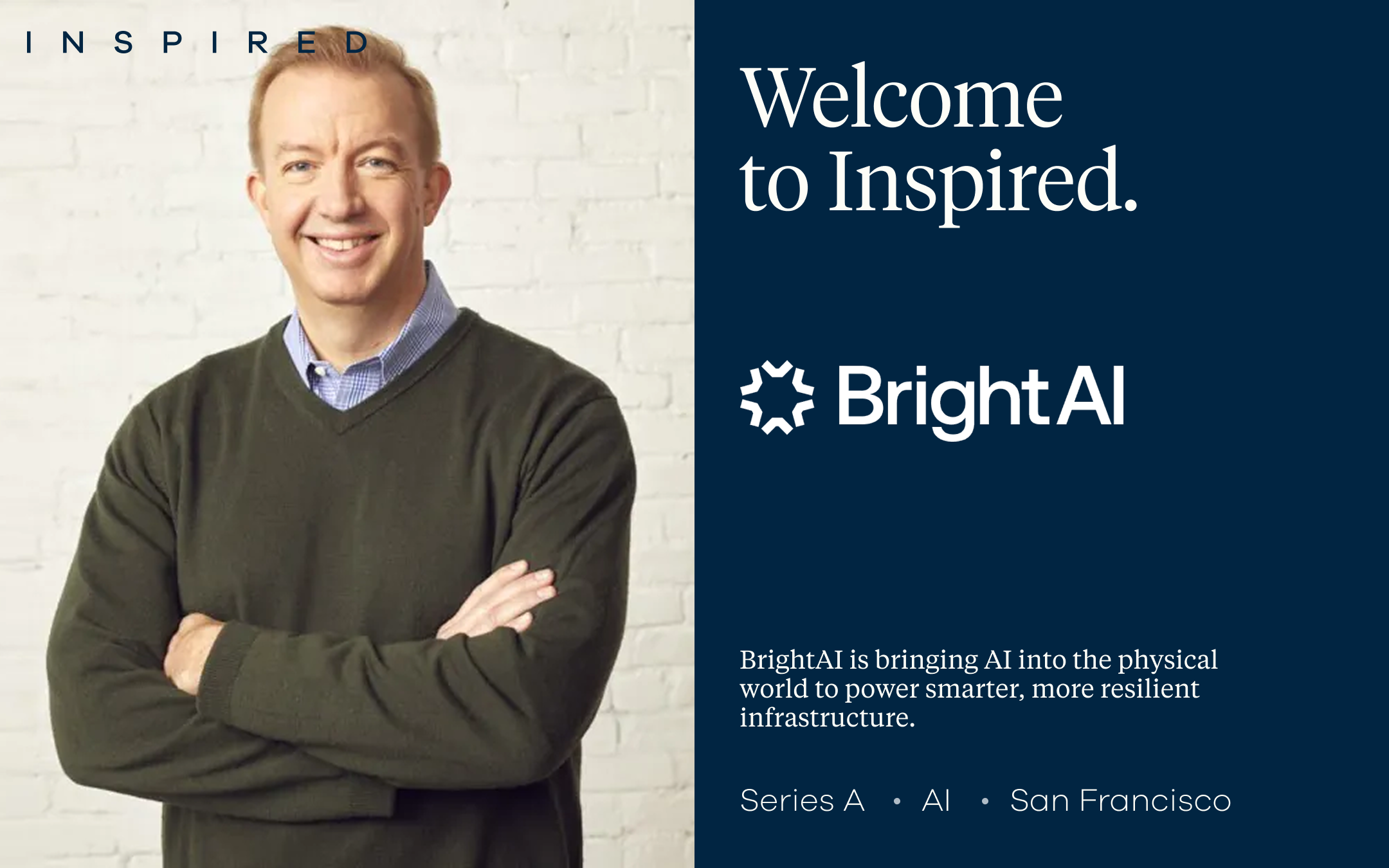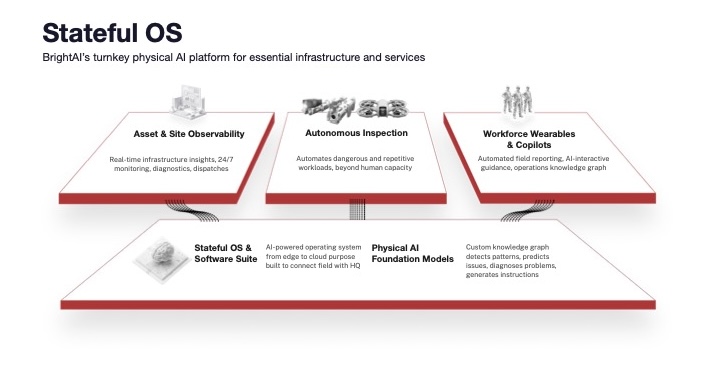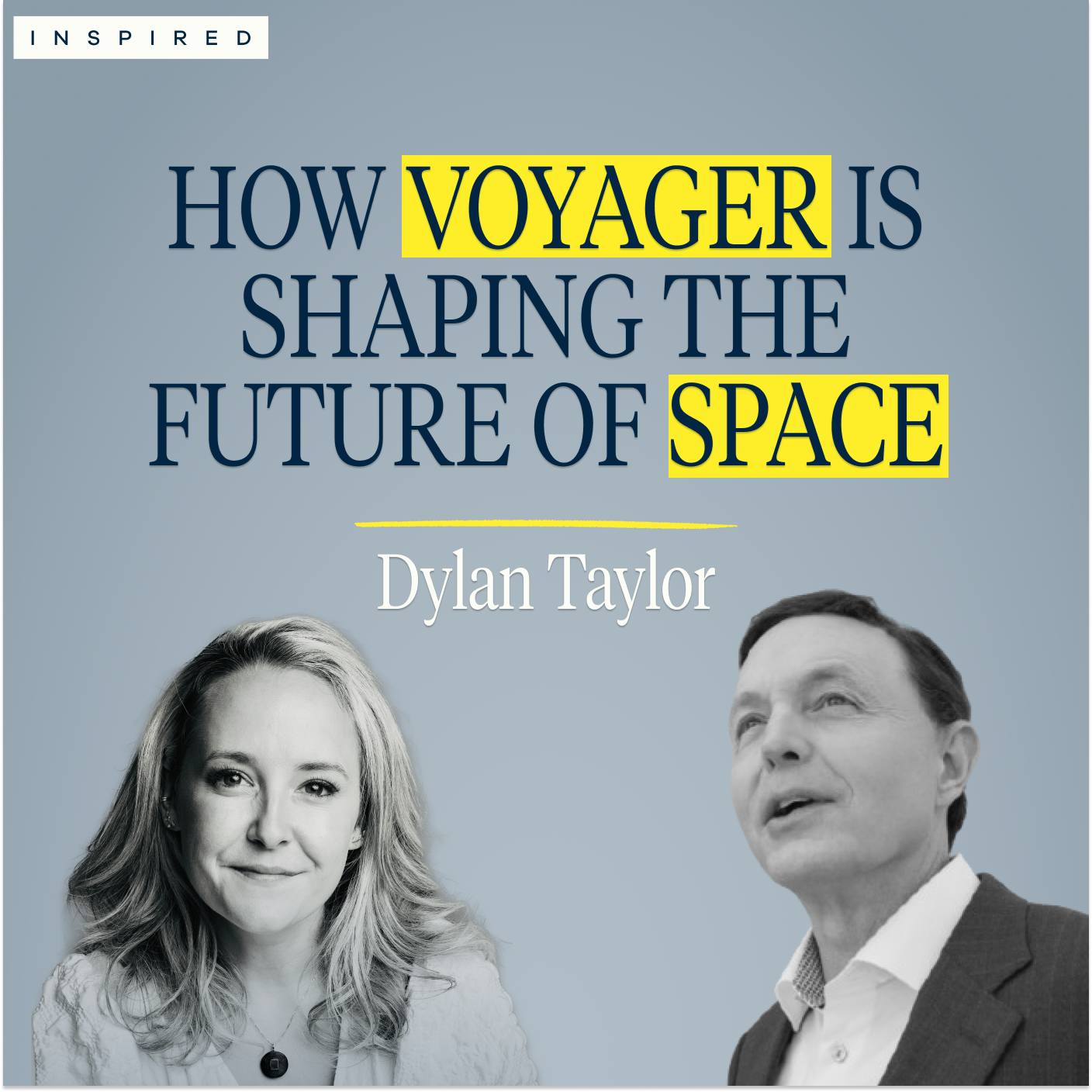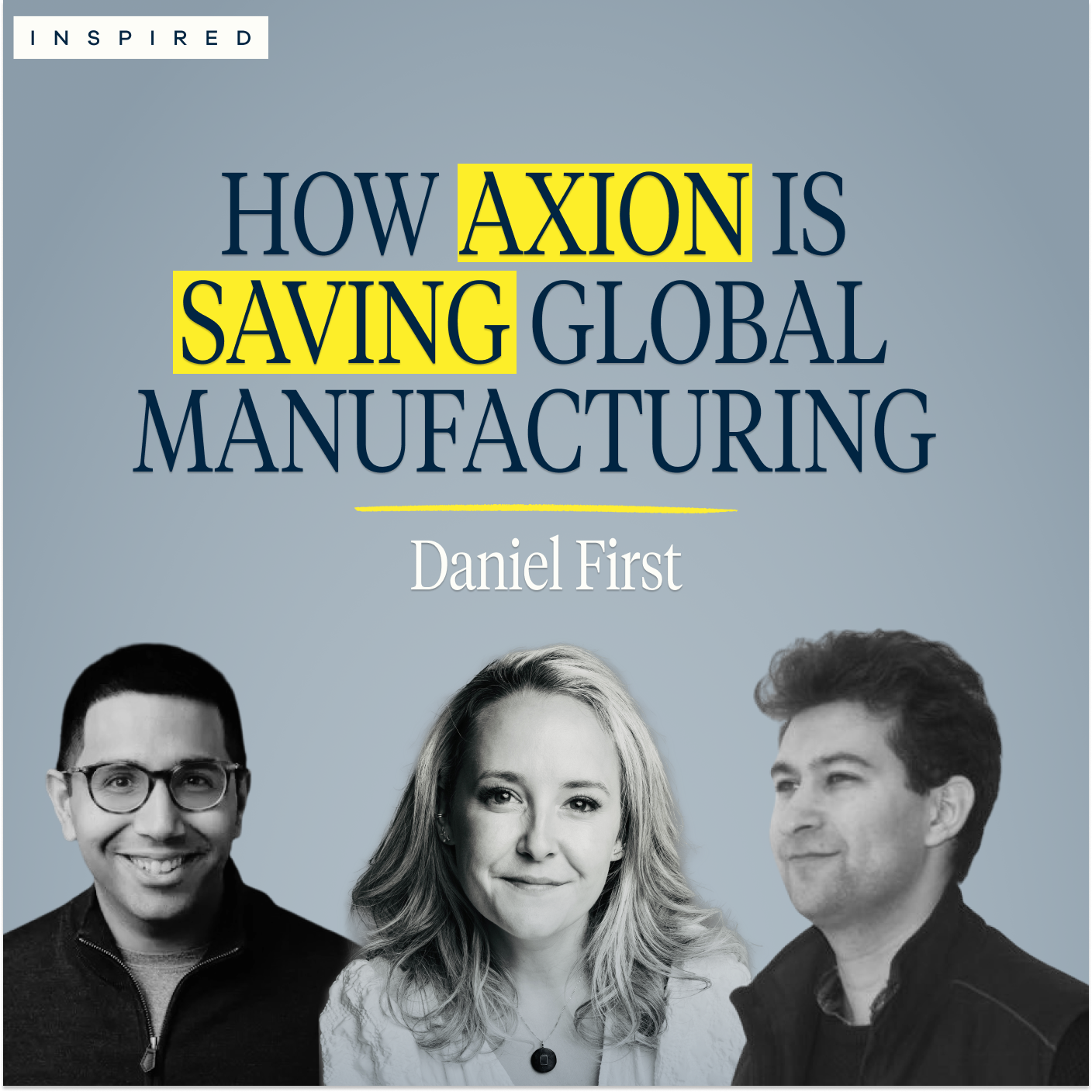

Today we are thrilled to announce that Inspired is co-leading the Series A for Bright.ai alongside Khosla Ventures. Founded by Alex Hawkinson, the former founder and CEO of SmartThings, BrightAI is setting out to build the physical AI platform for our world’s essential services. Bright’s execution to date has been exceptional – the business is now serving customers across top verticals such as power, energy, water, HVAC, and pest control with early customers seeing gains of 50% across productivity, asset resiliency, and asset quality.
Every day, our digital world continues to radically transform. Knowledge workers experiment with newly available agentic tools and systems that replace passive dashboards with proactive collaboration. But the physical infrastructure that defines our daily lives remains stubbornly analog. As do the occupations that surround it.
Over 45% of U.S. infrastructure is considered to be in poor condition, earning a C- rating from the American Society of Civil Engineers. Pipeline leaks waste over 6 billion gallons of treated water daily, enough to supply 15 million homes. Power outages cost the economy more than $150 billion annually, while equipment failures add another $50 billion in industrial downtime. But our infrastructure crisis runs deeper than just aging assets. Two factors compound urgency. First, the workforce we rely on to maintain this infrastructure is aging out without replacement, creating a perfect storm of increasing demand and decreasing expertise. And second, climate volatility accelerates the rate of infrastructure failure, making reactive maintenance strategies not only inefficient but genuinely dangerous.
In an early conversation with Alex, he struck us by quipping: “the Romans are laughing at us.” We are effectively managing infrastructure the same way we have for thousands of years: time-based human visits, the repetitive application of human labor to dirty and dangerous jobs, and an approach to maintenance defined by a brutal learning curve.
BrightAI's approach to solving these problems is both elegantly simple and technically sophisticated. The company deploys a range of connected devices – from small sensor "stickers", to wearables, drones, and robotics – all of which continuously monitor physical assets and deliver real-time insights based on this perception to asset owners and operators. Their hardware suite is underpinned by a foundational infrastructure AI model, a software platform called Stateful OS, and a library of edge AI models and knowledge graphs. These products are sector-agnostic and can be deployed across categories to serve varying customer use cases and requirements. In its terminal state, we believe BrightAI has the potential to fundamentally alter the cost structure of field services work by allowing customers to leverage a world model of global infrastructure assets.

One of the questions we ask ourselves before partnering with a founding team is whether or not a product was possible to build five years ago. In BrightAI’s instance, the answer is almost certainly not. Specialized hardware has created the potential for on-device inference that effectively distributes intelligence from data centers directly into edge devices. When coupled with advancements in communications infrastructure, these products offer up the chance to bring sophisticated intelligence “into the field,” however remote a setting may be.
BrightAI does not just sell tooling. They sell outcomes and certainty, with early customers seeing gains across productivity, asset resiliency, and asset quality of over 50%. We wrote about this shift in knowledge work software years ago, but its impact in the physical realm promises to be even more impactful. Robotics businesses that drive the most positive change in our world – and those that capture the most value – will not simply be vendors of hardware to an industry. They will instead take the form of robot-native automation platforms who work closely with their customers to shepherd them into the physical AI era.
One of BrightAI’s early customers, a water pipeline inspection business, used to rely on highly trained technicians using remote-controlled vehicles with onboard CCTV feeds to repair pipelines. Now, those same technicians can deploy autonomous systems into pipelines in several locations at once to complete the repairs, improving labor force utilization and ultimately driving better results in shorter time frames for municipalities.
Another early customer, a global pest control business, uses BrightAI’s sensors to remotely monitor traps installed in food and pharmaceutical production facilities. BrightAI can alert the service provider if traps catch a new type of pest, which creates the opportunity to not only reimagine manual inspections but to also more quickly identify structural issues at the facility of underlying customers.
We believe we’re at the precipice of a major “awakening” of the physical infrastructure our economy relies upon, and we couldn’t be more excited to partner with Alex and Bright as they play a role in this transformation.
More Content
Press

Supper Raises $11M Seed Round to Deliver an AI-Native Data Platform that Makes Data Access Effortless, Fast, and Reliable
Press

Supper Raises $11M Seed Round to Deliver an AI-Native Data Platform that Makes Data Access Effortless, Fast, and Reliable
Press



